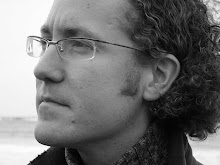
I am writing this blog post from a hotel room in Madison, Wisconsin (note: the picture above is not the hotel I’m staying in. That’s the Chicago Hilton; more later). Why am I in Madison? Other than the fact they have great frozen custard, Afghan, Mexican food and hotdogs (http://www.statestreetbrats.com/), I am here to present my eye tracking research to the Department of Communication Arts at the University of Wisconsin-Madison. If you are at all interested in Cognitive Film Theory you will be aware of Madison’s Comm. Arts department. They began teaching cognitive film theory before most of us were even aware that such an approach existed. People like Ben Singer, Jonathan Frome (now of Uni. Central Florida) and, of course the hugely influential David Bordwell (yes that guy who’s books you are always being told to read by your film teacher/lecturer/film geek friend/me). The department is so infused by cognitivist ideas that it was an absolute pleasure to present my research there. The intense discussion that my presentation invoked was incredibly invigorating. Its great to get such an intrigued and welcome reception of, what is essentially cognitive science research (although, research focussed on film). I look forward to many future exchanges with this group. I’m probably not supposed to mention this as I’m not sure if the details are finalised but, David Bordwell and the Department of Communication Arts will be hosting the Society for Cognitive Studies of the Moving-Images conference next Summer (2008) so I shall be eagerly returning to Madison next year. I also want to encourage as many other people interested in issues related to cognition and film, whether from arts, humanities, social sciences, sciences, or anywhere to attend this conference. It is going to be a hoot J.
Thanks to The Comm. Arts department for being so incredible hospitable, special thanks to Jeff Smith for being my guide and David Bordwell for being so receptive to my imposition.
Now some background: the reason why this visit to Madison was possible was because I was presenting at the Society of Cinema and Media Studies (SCMS) conference in Chicago last week. The conference is one of the foremost gatherings of Cinema, Television, and Media theorists from around the world. I attended two years ago when it was held in London and my appetite was whetted. This year I presented a paper about my recent eye tracking examinations of different editing techniques across a range of films. The paper was really well received and a lot of people were very intrigued by the potential for eye tracking as a tool in their analysis of film. The technology is getting close to the point that most researchers would be able to perform the kind of analysis I do on films. However, there are a couple of key components such as analysis and visualisation tools that are currently missing from most commercial eye tracking systems that would be required for the technique to really take off. I have developed my own tools that allow me to fill these blanks but most researchers would not be able to do this. And, of course the cost of most easy to use eye tracking systems is still prohibitive.
Who knows, maybe the technology will suddenly take both a cost and technological leap forward and it’ll become accessible to all. Watch this space……
Returning to SCMS, the conference was held in the Chicago Hilton (very swish….well the lobby is anyway; the conference presentation rooms/bedrooms are a tad odd). I was a complete conference geek, attending almost every session. Considering that the days ran 8:15am-8pm this is quite an achievement. The reason I attended so many sessions was because of the incredible range of interesting presentations. Everything from a bit of Cognitive Film Theory (Jonathan Frome, Joe Kickasola, Mark Minett), masses on New Media, Interactive Media, and Videogames, emotions and film, including discussion of automatic facial expression recognition (Kelly Gates), and even a presentation on the Queering of Kevin Smith (it doesn’t take much ;)…Carter Soles). This year there seemed to be a lot of presentations on the impact on-line distribution, web video, and interactive TV and media such as videogames were having on our classical theories of film and television. Fascinating stuff. One of my most satisfying panels was debating the implications of interfaces for interactive TV content e.g. TIVO and PVRs, and their effect on our relationship to the film/TV content. Does the interface, which is meant to empower the viewer by allowing them access to the content actually compete with the content itself?
So, all-in-all a great conference and trip to Madison. I look forward to coming back in 2008.





1 comment:
Hey Tim, this blog looks really interesting and I look forward to checking it out more. In the meantime, you should add this post to the SCMS blog-a-thon if you haven't already.
Post a Comment